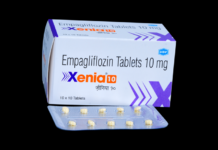Tokyo, August 26, 2020: Eisai Co., Ltd. announced today that a total of 10 presentations including the latest data on its in-house discovered orexin receptor antagonist lemborexant (product name: DAYVIGOTM CIV) will be given at the 34th annual meeting of the Associated Professional Sleep Societies (SLEEP 2020), to be held virtually from August 27 to 30, 2020.
The main presentations from Eisai at this conference include presentations relating to the SUNRISE 2 Phase III clinical trial conducted globally, including sites in Japan: long-term efficacy and safety results of lemborexant in elderly adults with insomnia (oral presentation, presentation number O-01, 474), responder profiles on treatment with lemborexant (poster number 479), efficacy and safety results of lemborexant in perimenopausal female subjects with insomnia (poster number 480), and others.
Lemborexant is a dual orexin receptor antagonist that inhibits orexin neurotransmission regulating sleep-wake rhythm by binding competitively to the two subtypes of orexin receptors (OX1R and OX2R). Lemborexant acts on the orexin neurotransmitter system and is believed to facilitate sleep onset, sleep maintenance, and wake by regulating sleep-wake rhythms. Lemborexant was approved in the U.S. for the treatment of adult patients with insomnia, characterized by difficulties with sleep onset and/or sleep maintenance, and was approved in Japan for the treatment of insomnia. The clinical development of lemborexant in patients with Irregular Sleep Wake Rhythm Disorder (ISWRD) associated with mild-to-moderate Alzheimer’s dementia is ongoing.
Insomnia is characterized by difficulty falling asleep, staying asleep, or both, despite an adequate opportunity to sleep, that can lead to daytime consequences, such as fatigue, difficulty concentrating and irritability.(1),(2) Insomnia is one of the most common sleep-wake disorders. Approximately 30% of adults worldwide have symptoms of insomnia.(3),(4) In particular, older adults tend to have a higher prevalence rate with many experiencing insomnia symptoms for months to years. As a result, insomnia causes various social losses, such as long absences and reduced productivity.
Eisai positions neurology as a key therapeutic area, and it will continue to create innovation in the development of new drugs based on cutting-edge neurology research as it seeks to contribute further to improving the benefits of patients and their families in diseases with high unmet needs, such as insomnia.
(1) Institute of Medicine. Sleep disorders and sleep deprivation: An unmet public health problem. Washington, DC: National Academies Press. 2006.
(2) Ohayon MM, et al. Epidemiology of insomnia: what we know and what we still need to learn. Sleep Med Rev. 2002;6(2):97-111.
(3) Ferrie JE, et al. Sleep epidemiology – a rapidly growing field. Int J Epidemiol. 2011;40(6):1431-1437.
(4) Roth T. Insomnia: definition, prevalence, etiology and consequences. J Clin Sleep Med. 2007;3(5 Suppl):S7-S10.
Corporate Comm India (CCI Newswire)






















